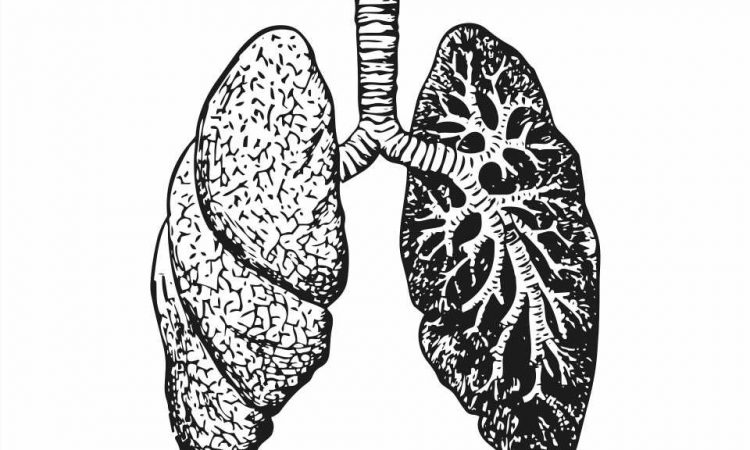
In the ongoing quest to discover which constituents of the immune system provide highly specified protection, scientists have found that a component of the innate immune system is endowed with the capability of guarding the lungs from pneumonia-induced injury.
The innate immune system is the body’s first line of defense against pathogenic invaders. The system is present at birth and functions throughout life as an explosive burst of protection. Natural killer cells are part of the innate immune system, so are certain antibodies and the cells known as macrophages, the big eaters, whose role is to swallow invading microbes whole then reduce them to useless debris.
A key component of the innate immune system is yet another system—the complement system, also known as the complement cascade. Its role is to enhance—complement—the activity of antibodies and phagocytic cells (those that eat invaders) to rid the body of infiltrating microbes.
The complement cascade, which has two pathways, increases inflammation, opsonizes pathogens—labels them for destruction—and directly kills invaders through lysis, which means rupturing their cell membranes. All of these activities are aimed at aiding the innate immune system’s assaults as it engages in all-out war against pathogenic invaders.
To fully understand the complement system it’s best viewed as a flowchart, which defines the role for each of its many components.
Writing in Science Immunology, a team of researchers from the John T. Milliken Department of Medicine at Washington University School of Medicine in Missouri, explain that the complement cascade consists of a series of proteins, mostly manufactured in the liver, with each carrying out a specific task.
They’ve also laid the foundation for a breakthrough understanding of the cascade, demonstrating in the laboratory that a single complement component dubbed C3 is adept at fighting bacteria, even lethal species, that invade the lungs. This component, the researchers say, has a unique specificity as a defender of lung epithelial tissue, particularly in the face of bacterial pneumonia.
Sanjaya Sahu and Ayse Ozantürk, in collaboration of a large team of investigators, sought to fully delineate C3’s antibacterial role. They say complement proteins in general are innate immune defense molecules that protect the host against pathogenic microorganisms.
“The complement component C3 is a fundamental plasma protein for host defense, produced largely by the liver. However, recent work has demonstrated the critical importance of tissue-specific C3 expression in cell survival,” Sahu, lead author of the new research wrote. “We analyzed the effects of local versus peripheral sources of C3 expression.”
The investigators found that cells in the lungs also produce C3 with distinct antibacterial capability, a discovery that challenges prevailing scientific wisdom regarding the role of this protein. The team provides evidence supporting their hypothesis that locally produced C3 is the weapon that battles bacteria when it’s the source of pneumonia in the lungs.
Indeed C3, according to the team, combats pneumonia most effectively when it is locally secreted by lung-epithelial cells. Until now, the value of lung-derived C3 and its role in fighting pneumonia had not been fully appreciated.
To test their hypothesis that lung-produced C3 is crucial to epithelial cell protection during pneumonia, the team turned to a knockout mouse model.
By infecting knockout mice with a particularly pathogenic strain of a pneumonia-causing bacteria called Pseudomonas aeruginosa, the St. Louis-based team was able to investigate the consequences of knocking out either all C3 or only local C3 from lung epithelial cells. Not surprising, results showed that a global absence of C3 caused notable susceptibility to infection.
But the team didn’t stop there. Investigators knocked out C3 production in the mice’s lung epithelial cells in an eye-opening experiment that revealed something unexpected: elimination of lung-specific C3 significantly impaired the animals’ ability to overcome pneumonia. This struggle to defeat the infection occurred despite the presence of circulating C3 at normal levels. These findings suggest lung epithelial cell-secreted C3 plays an important role in protection against pneumonia.
It also suggests that engineering this protein for administration in pharmaceutical doses may one day provide a way to treat bacterial pneumonia, especially strains that are resistant to conventional antibiotics.
“The effects of the complement system have historically been attributed to its presence in the circulation,” Sahu and the other authors concluded. “We show that in addition to liver-derived C3, lung epithelial cell-derived C3 supports the host response to pneumonia by promoting both immune resistance and tissue resilience.”
More information:
Sanjaya K. Sahu et al, Lung epithelial cell–derived C3 protects against pneumonia-induced lung injury, Science Immunology (2023). DOI: 10.1126/sciimmunol.abp9547
Journal information:
Science Immunology
Source: Read Full Article
